Share This
Since National Olive Day is June 1st, we had to extend our International Mediterranean Diet Month celebrations for just one more day. After all–when you adopt the Mediterranean Diet, these little fruits become an important ingredient to use daily in many different ways—both in their whole form, and as olive oil! They are great on their own as snacks and appetizers, and are important components in dips, sauces, salads, whole grain and pasta dishes, main dishes, stews, and even baked goods.
The people behind National Olive Day, Phil Meldrum and Brandon Gross of FOODMatch, are a combined wealth of knowledge when it comes to olives and the rich traditions behind growing, harvesting, and curing them.
The olive is essential to Mediterranean cuisine and culture. As Meldrum writes in the introduction to his deliciously interesting book, Simply Mediterranean, ”So much of Mediterranean culture can be traced back to the olive, a simple fruit that is not only the culinary foundation of antiquity but has also become a symbol of peace and prosperity. Nature confirms that the olive is truly a gift to mankind. Unlike many other fruit trees, the olive propagates through its roots. Its fruit, the olive, has no real biological value to the tree. Yet, for thousands of years, the olive has been a source of sustenance for mankind.”
“The Mediterranean lifestyle is one of balance and moderation and olives are an iconic part of the heritage and culture of the region,” Gross adds. We couldn’t agree more.
Olives provide heart-healthy monounsaturated fats and natural antioxidants. Many traditionally produced olives are also fermented, meaning they provide probiotics that help keep our gut microbiome healthy. And while there are more varietals, flavors, and colors of olives than we can even count—they all stem from the same olive tree species, Olea Eurpoaea.
To help olive aficionados navigate the innumerable olive varietals, FOODMatch developed Tasting Placemats (see below) to lead people through the five major ways that olives are cured. “Like wine or coffee, there are so many nuanced flavors and colors that can develop during production,” Gross explained. “Olive curing is a true art and often times the most important factor in determining what an olive will taste like, feel like, look like, etc.” FOODMatch also designed a poster that showcases the diverse family of Mediterranean table olives.
In addition to being the cherry (or olive) on top of International Mediterranean Diet celebrations, National Olive Day on June 1 marks Kalamata olive season when last winter’s crops are cured and begin arriving from Greece. According to Gross, FOODMatch timed the festivities with the harvest in mind to emphasize the fact that olives are produce, they are effected by weather, and while we preserve and cure them to enjoy year-round, these wonderful fruits are often best when fresh.
For Gross and for FOODMatch founder Phil Meldrum, this deep connection to the land, the traditional old ways, and the people behind the crops is the true cause for honoring olives on June 1.
“We’ve spent 20 years developing relationships with farmers who take pride in their craft, often times coming from generations of olive growers,” said Gross. “I remember my first visit to our fields in Greece where I met a man who had just returned to his village after spending 20+ years in Chicago. After all the time in America, all he wanted to do in the twilight of his life was return to Greece and reconnect with the olive groves.”
In honor of this special day, these special fruits, and the people who produce them— we’re going to highlight some of the most popular table olives from around the Mediterranean along with some delicious recipes.
Greece
Kalamata: large black olives, among the most well-known Greek olives. Kalamata olive trees are found in the southern Peloponnese, in and around the city of Kalamata
Konservolia: known by the name of areas producing it, such as Amfissa, Agrinion, Volos, etc.
Recipe Idea: Caramelized Onion and Kalamata Flatbread
Italy
Castelvetrano: Sicilian olives are among Italy’s most popular table olive. Bright green and sweet.
Ligurian: a black olive, salt-brine cured from Liguria, the northwestern-most region of Italy, which is close to France’s Niçoise olive region.
Gaeta: Italian purplish-black olive from Puglia in southern Italy. Mild in flavor with a wrinkled appearance, often packed with herbs.
Other Italian olive varieties include Cerignola and Leccino.
Recipe Idea: Fettucine with Cauliflower, Anchovies, Olives and Toasted Breadcrumbs
France
Niçoise: black olives, harvested fully ripe, small in size, often packed with herbs. From near the city of Nice; an essential ingredient of the Provençal Niçoise salad, as well as of tapenade.
Nyon: petite, jet black, wrinkly olives from the south of France, dry-cured, then aged in brine.
Other French olive varieties include Picholine, Lucques, and Languedoc.
Recipe idea: Watermelon Fennel Niçoise Salad
Spain
Arbequina: a small brown olive native to the Catalonia region of Spain.
Gordal: the largest olive grown in Spain. Plump, jumbo, green olives originating in Seville in the Andalusia region.
Manzanilla: green in color, brine-cured, and often stuffed with pimientos (red peppers).
Other Spanish olive varieties include Arauco, Cacereña, Hojiblanca, Verdial, and Vélez-Málaga.
Recipe idea: Roasted Olives
Morocco
Beldi: black, wrinkly, salt-cured olives.
Recipe idea: Toasted Moroccan Carrots with Green Olives
Turkey
Gemlik: from the Zeytinbagi region of northern Turkey, small to medium in size and jet black.
Recipe idea: Turkish Shepherd’s Salad
For more tasty olive recipes check out our 12 Great Ways to Use Olives and the Oldways recipe library. Plus, check out the Instagram Takeover that Food Match is doing with us on this year’s National Olive Day. To learn more about olives and their wonderful health benefits check out our health study library!
We hope you enjoy “olive” these facts and recipes as much as we do, and we urge you to try out a different variety—It may become your new favorite!
Want biweekly Med Diet information and recipes in your Inbox? Sign up for our Fresh Fridays newsletter by clicking the Subscribe button at the bottom of this page!
Join the Make Every Day Mediterranean Club Facebook group for additional information and support

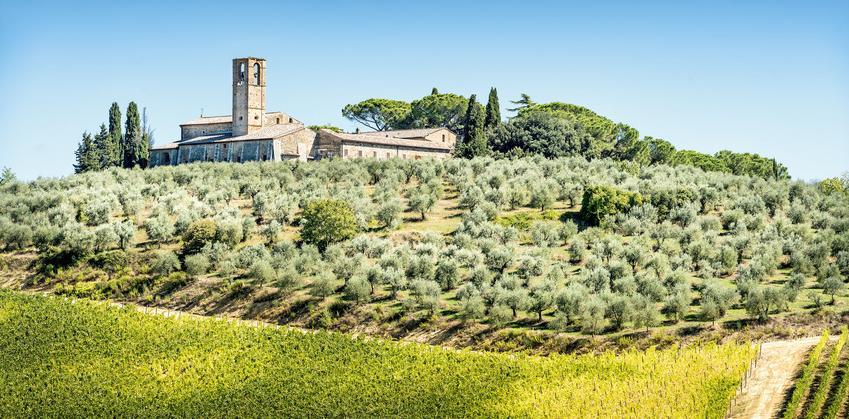
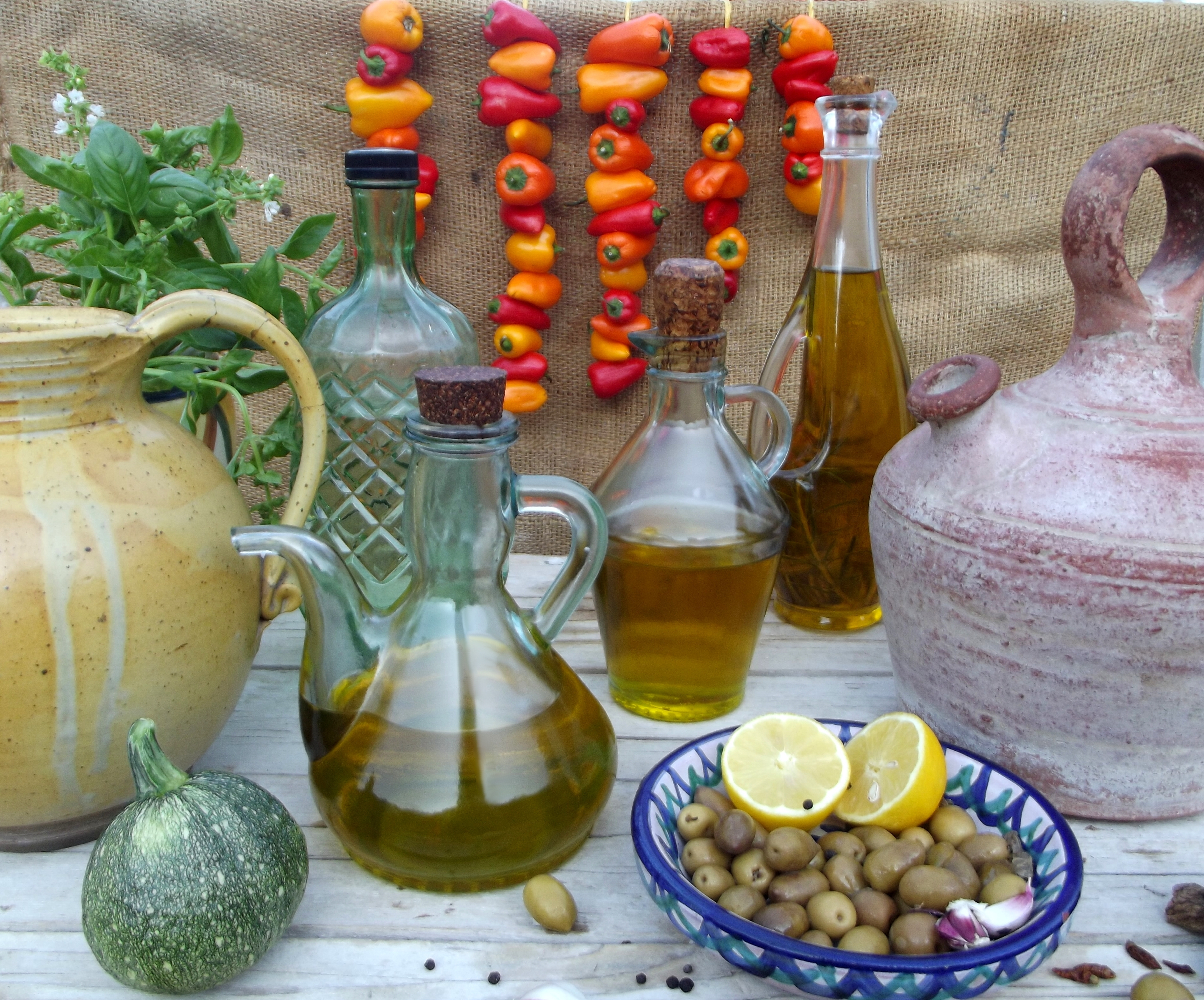
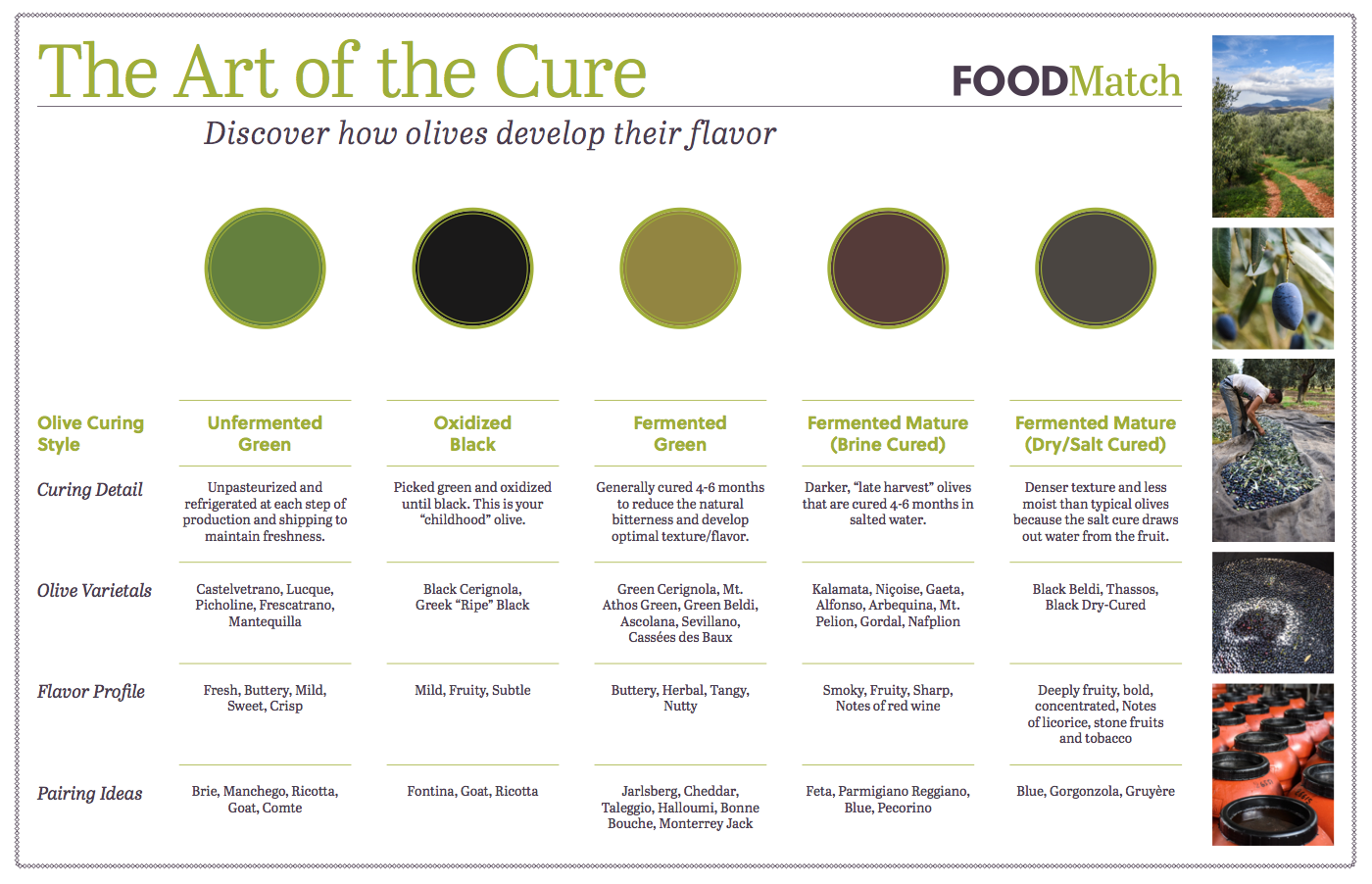


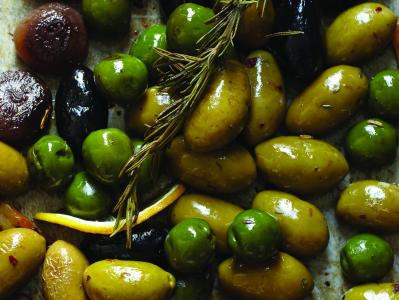
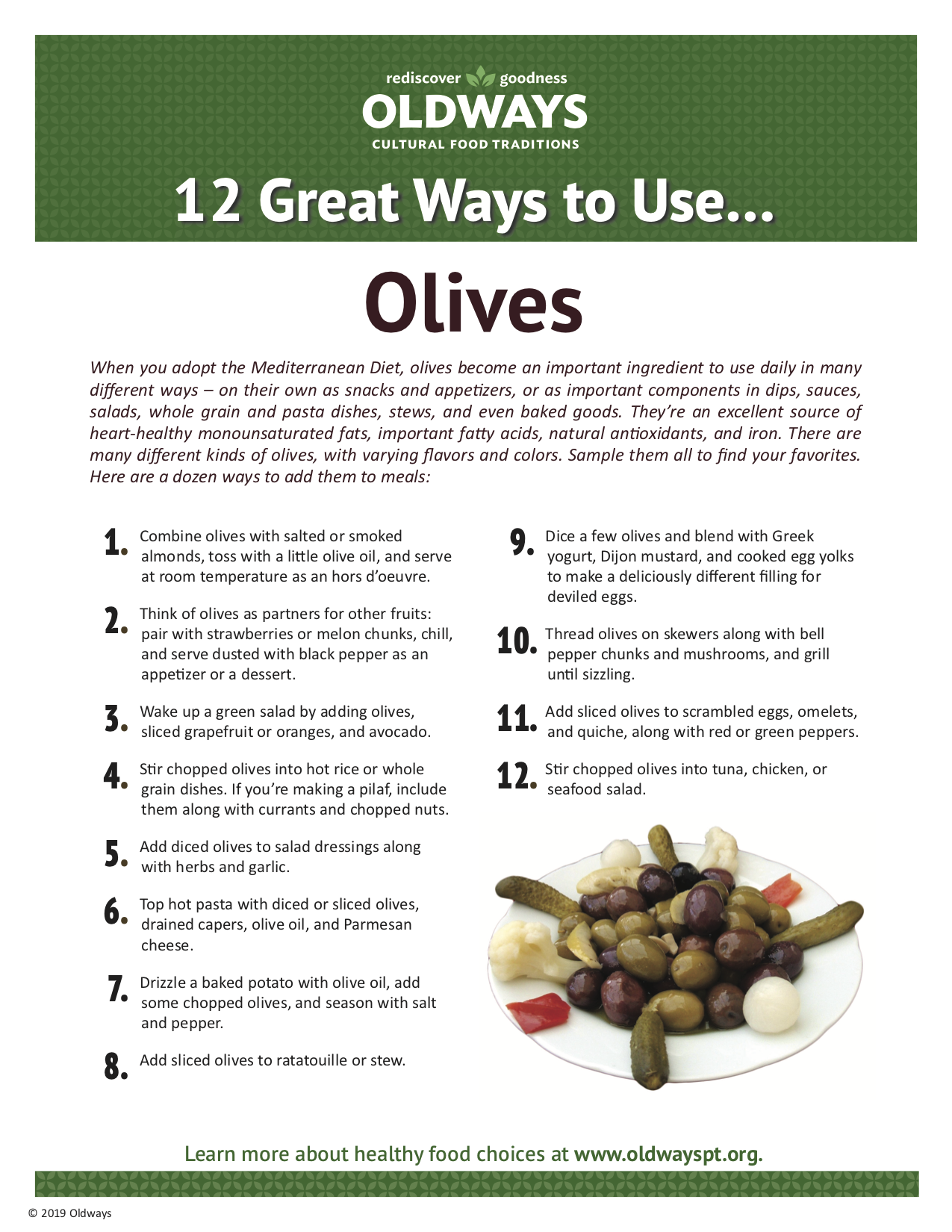
Comments
Add a Comment